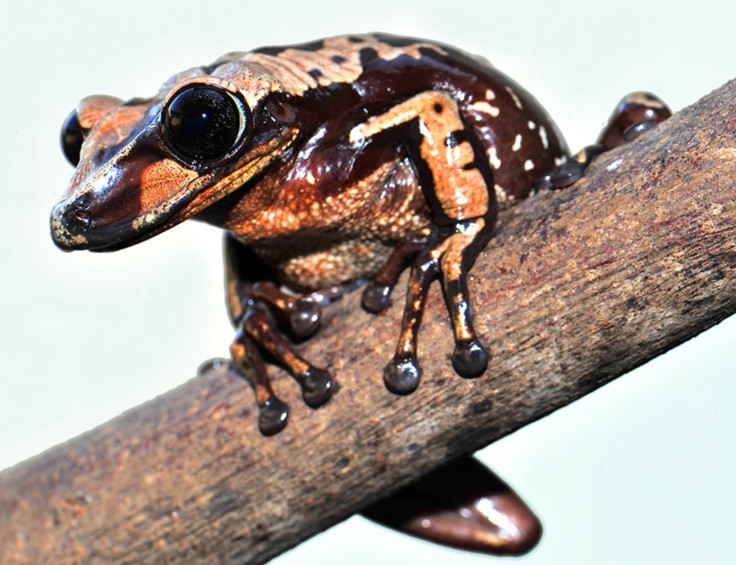Venomous Frogs Discovered In Brazil Are Deadlier Than Pit Vipers

There were no known venomous frogs, until now. A research published Thursday showed that two species of helmeted tree frogs are the world’s first-known venomous frogs and are deadlier than pit vipers.
It is widely acknowledged that some frogs are poisonous. But there is a slight difference between poisonous and venomous -- in the way the toxins are passed on to others. Poisonous animals do not deliver their toxins directly, instead their body or certain parts contain harmful substance. They can be poisonous if touched or eaten. However, venomous creatures inject their secretions through a specific part next to a gland producing the lethal material.
These Brazilian frogs, Corythomantis greeningi and Aparasphenodon brunoi, inject their lethal toxins through head-butting, the research published in the journal Current Biology stated. The amphibians use bony spines located on their heads to deliver the harmful toxins.
Researchers noted that these frogs have been known for decades, but their venomous characteristic was not discovered until now.
"Discovering a truly venomous frog is nothing any of us expected, and finding frogs with skin secretions more venomous than those of the deadly pit vipers of the genus Bothrops was astounding," study co-author Edmund Brodie Jr. of Utah State University, said in a statement released Thursday.
Researchers explained that these frogs have sharp spines, well-supplied poison glands and the skill to turn their heads, which helps them in defending themselves from predators.
Interestingly, the scientists stumbled upon these frogs while collecting them for a research. C. greeningi frog, which is less toxic of the two, injured co-author Carlos Jared of Butantan Institute in Sao Paulo, after which he was in intense, radiating pain for about five hours. The incident caught the researchers’ attention. According to them, a single gram of toxins from the other frog species, A. brunoi, could kill more than 300,000 mice or about 80 humans. Its fatal venom is 25 times stronger than a viper's toxins, while C. greeningi is twice as toxic as a pit viper.
"It is unlikely that a frog of this species [A. brunoi] produces this much toxin, and only very small amounts would be transferred by the spines into a wound," Brodie said. "Regardless, we have been unwilling to test this by allowing a frog to jab us with its spines."
A. brunoi has orange and brown coloration and prefers to be in humidity of the rain forests, while C. greeningi lives in dry and rocky surroundings, the researchers said.
The latest discovery is crucial as it will provide more insight to the biology of amphibians and their connections with predators, according to the researchers.
© Copyright IBTimes 2024. All rights reserved.






















